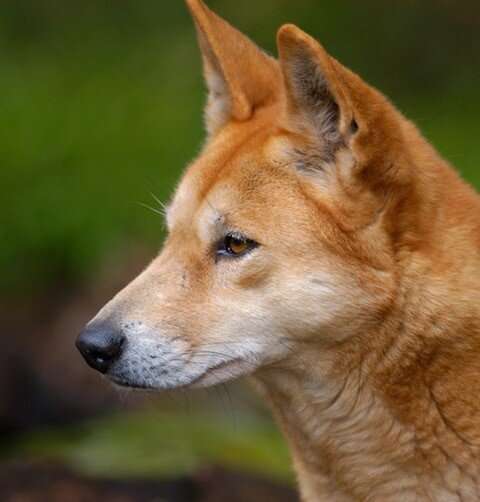They were once domestic pets, then natural selection made dingoes wild

Believed to have been pets at one stage in their evolution, the origins of the Australian dingo are shrouded in mystery, compelling generations of biologists to snoop for clues about their early history. New evidence has recently been revealed by a genomic study that offers tantalizing details about their adaptation from domesticated to wild animals.
The study's lead author Peter Savolainen, professor at the Department of Gene Technology at KTH Royal Institute of Technology, says that thousands of years ago these outback predators were pet dogs in Asia. According to the genetic analyses, dingoes began their journey of feralization—and their migration to Australia—8,300 years ago when they split off from their ancestors, which today are known as Indonesian village dogs.
"Our analyses of phylogeny, population structure, and demography as well as selection analysis, show that the dingo is a genetically distinct population clearly differentiated from the domestic dog," Savolainen says. "Genes related to behaviour, food digestion and reproduction have evolved in order to adapt dingoes to living in the wild instead of together with humans."
Previous studies have shown a connection between Southeast Asian domestic dogs and the dingo, but questions have remained over the precise timing and routes of their migration toward Australia. Savolainen says the evidence now shows their path beginning in southern East Asia 9,900 years ago when they diverged from indigenous dogs and migrated to Maritime Southeast Asia, eventually reaching Australia and beginning an 8,000-year transition into a phenotypically and genetically distinct population of wild dogs.
The analysis also showed that dingoes and their cousins, New Guinea Singing Dogs, were more similar to wolves than to dogs. "There is considerable difference in diet between domestic dogs and the related wild canids, wolves and dingoes," he says.
The wild canid diet consists mostly of meat. But domestic dogs normally eat considerable amounts of vegetable food provided by humans, and their genetic profiles reflect this change. Genes that correlate to metabolism for the dingo were by contrast shown to be more similar to that of wolves.
More information: Shao-jie Zhang et al. Genomic regions under selection in the feralization of the dingoes, Nature Communications (2020). DOI: 10.1038/s41467-020-14515-6
Journal information: Nature Communications
Provided by KTH Royal Institute of Technology















